From creating vision boards to spending the night out with your most raucous friends waiting for midnight to strike, everyone chooses to celebrate New Year’s holidays differently. Yet a common theme held from country to country and culture to culture is bringing people together and celebrating with food.
Food has been a longstanding part of holiday celebrations. From the preservation of culture to the love and intention poured into creating a memorable feast, the sharing of meals means more than just survival. In many cases, these annual celebrations feature beloved family recipes that have survived wars and been passed down for generations, becoming cornerstones of holiday traditions and an homage to the resilience of the people who originated them.
Recommended Videos
[RELATED: TELL US: What are your family’s Florida Christmas traditions?]
As New Year’s approaches, Stacker looked at specific food practices from around the world. Where did they come from? What are the meanings behind these time-tested recipes? What makes these traditions so special to the cultures or communities they came from?
Find every episode of Florida Foodie on YouTube:
With that in mind, Stacker compiled a list of 10 foods used in New Year’s Eve traditions and their origin stories, using sources like CNN, Allrecipes, TheGrio, and more. While every recipe or tradition is different, one of the most beautiful threads woven throughout them all was a desire to bring abundance, prosperity, luck, and love to the community.
How many of these amazing dishes align with your own personal traditions?
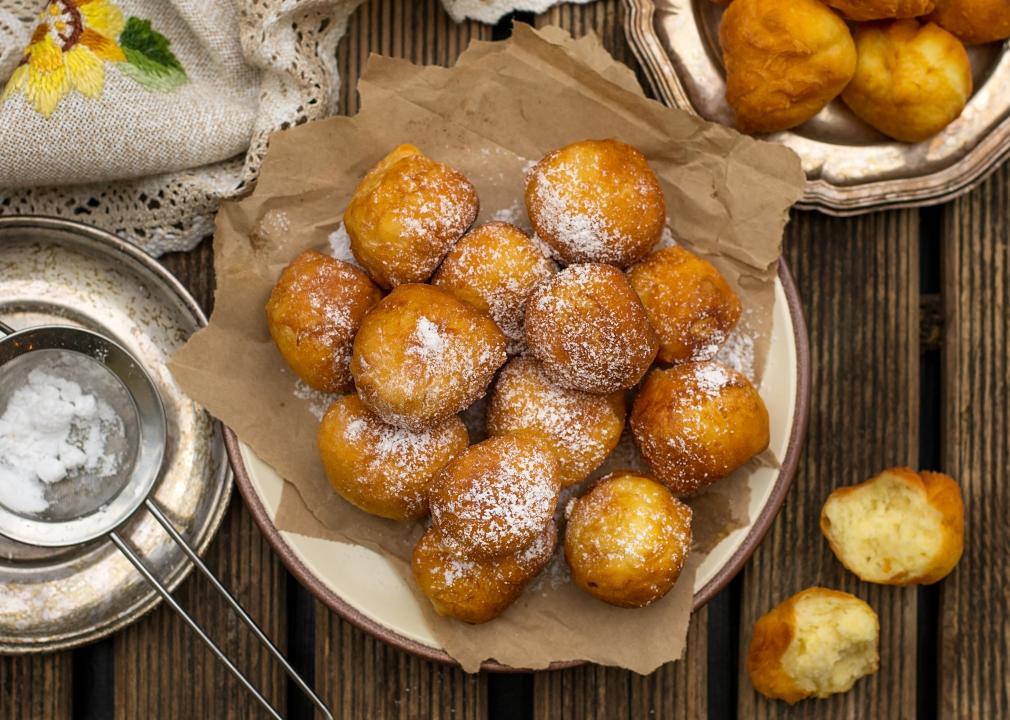
larik_malasha // Shutterstock
Buñuelos
These fried dough confections have been a tradition for New Year's celebrations throughout Latin America. Brought over by Spaniards, buñuelos come in many forms depending on the country. In Mexico, this dough-based sweet is rolled out thin and deep-fried until it turns into a puffed disc. In Cuba and Nicaragua, it's made with yuca. In Colombia, cheese also becomes an ingredient. These treats also take on many shapes, from the aforementioned discs to flowers to figure-eight shapes.
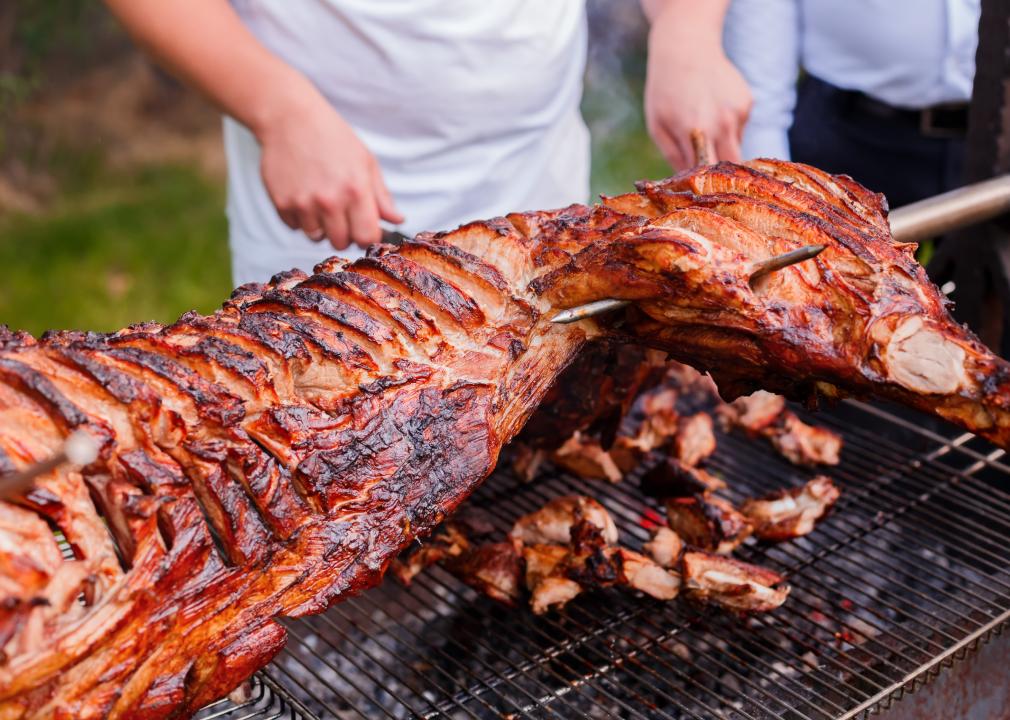
Jukov studio // Shutterstock
Suckling pig
In Cuba and Austria, a suckling pig slow roasting over an open fire has been a long-standing tradition for celebrating the new year. In fact, pork served in various iterations is a tradition that has woven its way through many cultures. It is believed that while chickens, turkeys, and other fowl root for food by kicking their feet backward, pigs bury their snout in the ground and move forward, considered a sign of prosperity for the coming year. Another potential reason for pork's popularity could be more pragmatic. In Austria's neighboring country, Germany, pigs were usually slaughtered in the winter, which meant they would be the freshest during the holiday season.
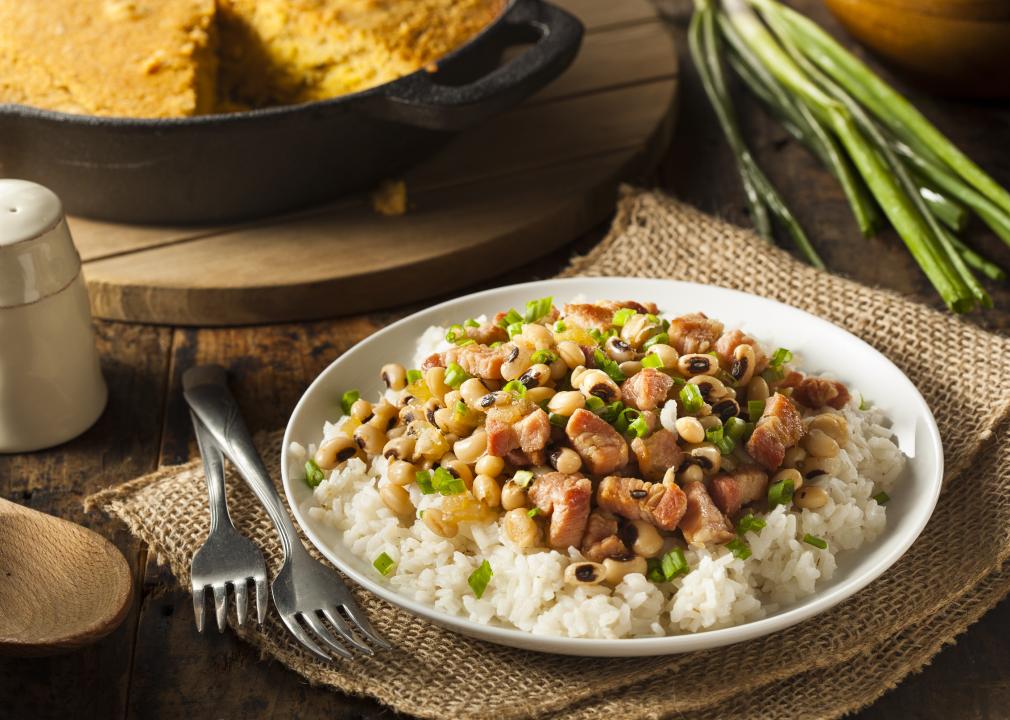
Brent Hofacker // Shutterstock
Hoppin' John
The traditional meal of black-eyed peas and rice, known in the South as Hoppin' John, dates back to the mid-1800s in South Carolina, a popular area for plantation owners. Historians believe people who were enslaved brought these West African beans with them and replanted them on American soil.
Black-eyed peas, also known as cowpeas, were used as offerings to deities in some African religions, which explains their prominence in this dish. Believed to bring good luck to those who eat it, the recipe also includes red peppers and salt pork. The dish is often featured in Watch Night services in African American communities that celebrate the new year and the official enactment of the Emancipation Proclamation. Collard greens and cornbread were reported to have rounded out the meal.
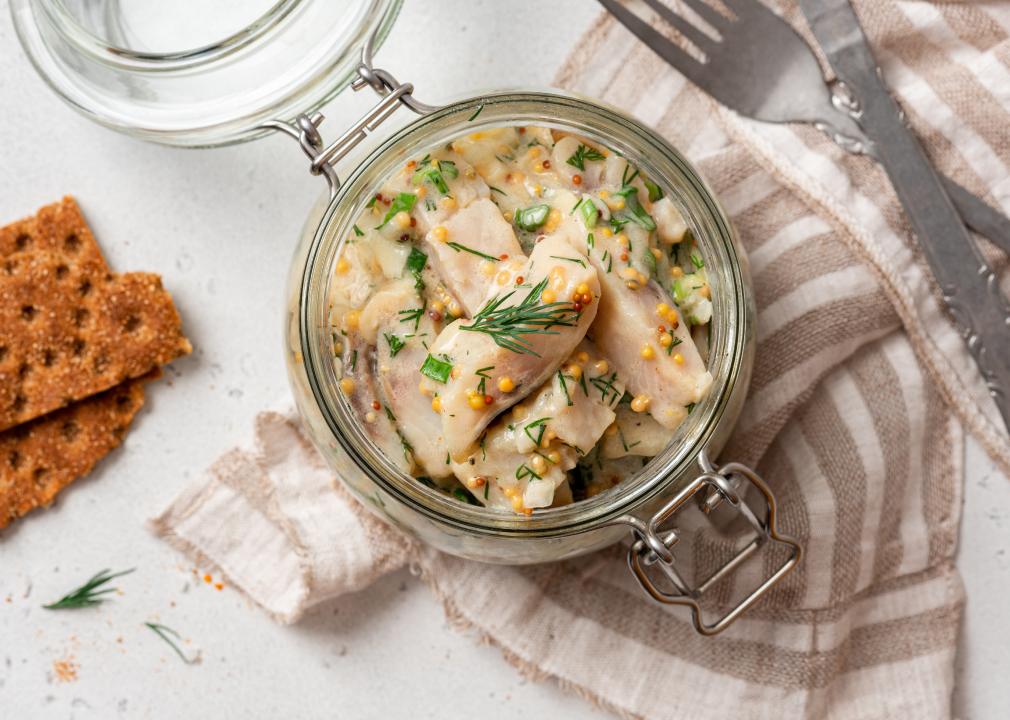
Svetlana Monyakova // Shutterstock
Pickled herring
While pickled fish may not tickle everyone's fancy, the tradition has persisted throughout Scandinavian, Polish, and German cultures for years. Given their abundance in those parts of the world and the fish's silver color, the herring has become a sign of prosperity and bounty. Many will eat the herring at midnight to signify a prosperous start to the new year. It is also served in many other ways: sometimes with cream sauce or onions and as part of a larger smorgasbord, including pâté and meatballs.
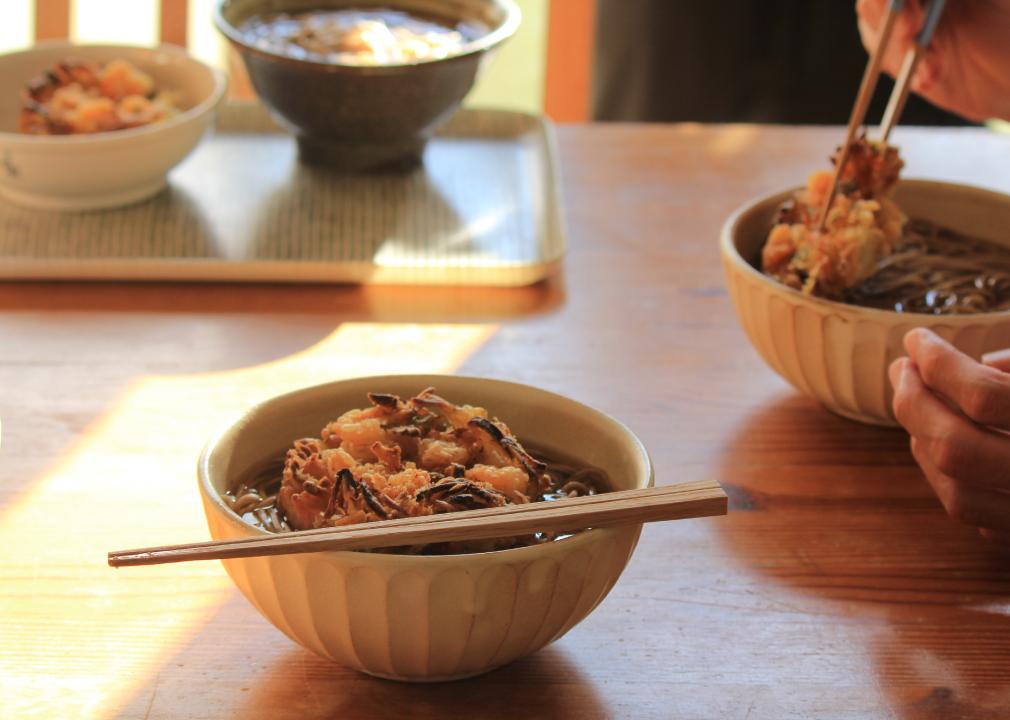
yuzu // Shutterstock
Toshikoshi soba
A fresh start to the new year is usually what most of us look for when the clock strikes midnight, and the symbolism behind toshikoshi soba is exactly that: a warm and cleansing bowl of buckwheat noodles swimming in dashi broth. According to Japanese beliefs, the length of the noodle is meant to signify long life, while the buckwheat recalls the hardiness and resilience of the crop. The tradition started in 13th- or 14th-century Japan, and the simple dish endures today.
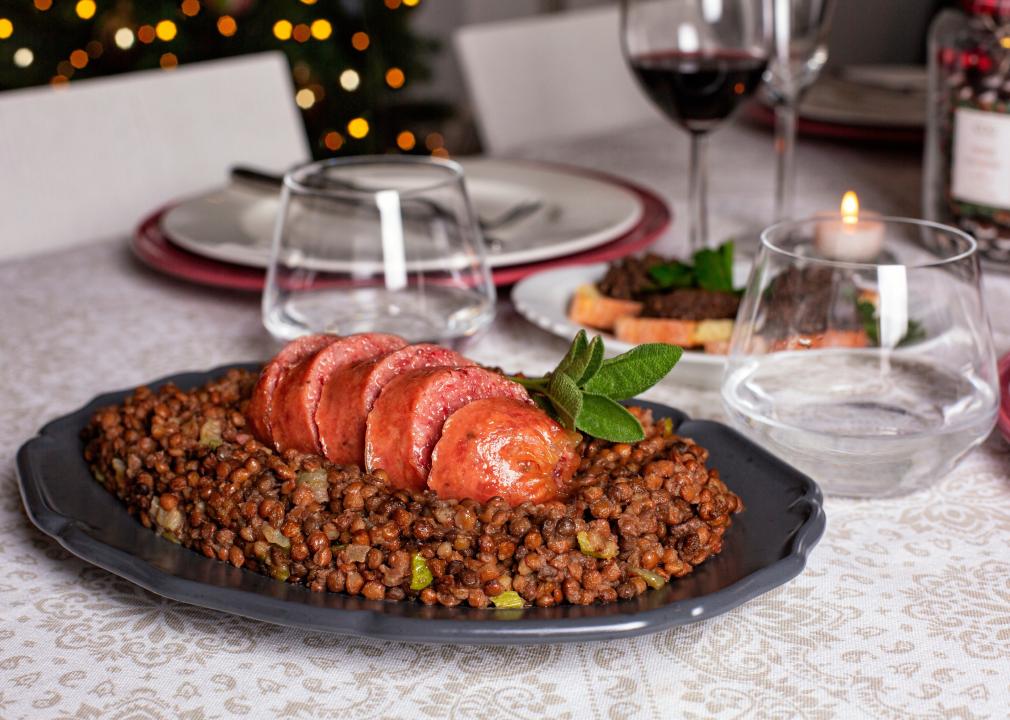
OlgaBombologna // Shutterstock
Cotechino con lenticchie
Another midnight dish primed and ready in many Italian households is cotechino con lenticchie, a stew of sausage with lentils. A simple dish, this recipe uses a sausage of pork rind, nerves, and fresh meat—in other words, nonfirst-choice meat that is easier on the pocket and many can afford. It is then laid on a bed of lentils, which Italians associate with prosperity because of its coin shape and ability to increase in size when cooked. Apart from New Year's Eve, Italians also celebrate La Festa di San Silvestro on the same day, which marks the death of Pope Sylvester I. He is best remembered for converting Constantine to the Catholic faith.

PhoebeG // Shutterstock
Vasilopita
Another theme in many holiday traditions is a cake with a hidden item. There is the king cake in Catholic countries—a treat usually eaten during Epiphany (Jan. 6) and has a hidden baby Jesus. In Irish traditions, a barmbrack cake served around Halloween can help divine your future depending on what charms you unearth while eating it. But in Greece, there is vasilopita. Known as the New Year's cake and flavored with a hint of orange (another lucky food in places like China) the moist confection is baked with a coin hidden inside.
The tradition supposedly goes back to St. Basil (whom the cake is named after). St. Basil, whose feast day is Jan. 1, was a bishop in Caesarea Mazaca—now the city of Kayseri in Turkey. A version of the story goes that the bishop baked coins into cakes to give to less fortunate people. The cakes were meant to hide these alms, preserving the recipient's dignity. Today, however, whoever receives the slice with the trinket is said to have good fortune coming for the year.

mnimage // Shutterstock
Tteokguk
Lauded as New Year's soup in Korea, tteokguk is a brothy stew made with meat stock; tteok, or disc-shaped rice cakes; garnishes like julienned eggs, seaweed, or scallions; and is consumed during Seollal, or Korean New Year, the first day of the lunar calendar. While there isn't a clear time frame for when Koreans started adding rice cakes to their soup, its earliest references can be found in a 19th-century book of customs called Dongguksesigi. The white tteok signifies cleanliness, a new beginning for the year, while its coin shape symbolizes prosperity since it is reminiscent of Korea's old currency, yeopjeon.

Poleijphoto // Shutterstock
Oliebollen
Old-fashioned Dutch doughnuts more commonly known as oliebollen (roughly translated as oil balls) are sugary, fried dough balls stuffed with raisins or currants. The earliest recipe for these treats dates back to the 1667 Dutch book "De Verstandige Kock" ("The Sensible Cook"), which details directions for oliekoecken, a direct ancestor of this holiday treat.
One origin story for this dish dates back centuries to Germanic tribes who ate the fried treats to ward off the dangers of Perchta, a goddess known for cutting open the bellies of all who crossed her path. The tribes believed the oil from the treat would coat their stomachs, causing Perchta's blade to slide off the bodies of any who ate them. While the fear of sword-wielding spirits may no longer be as prevalent, the doughnuts have carried on.
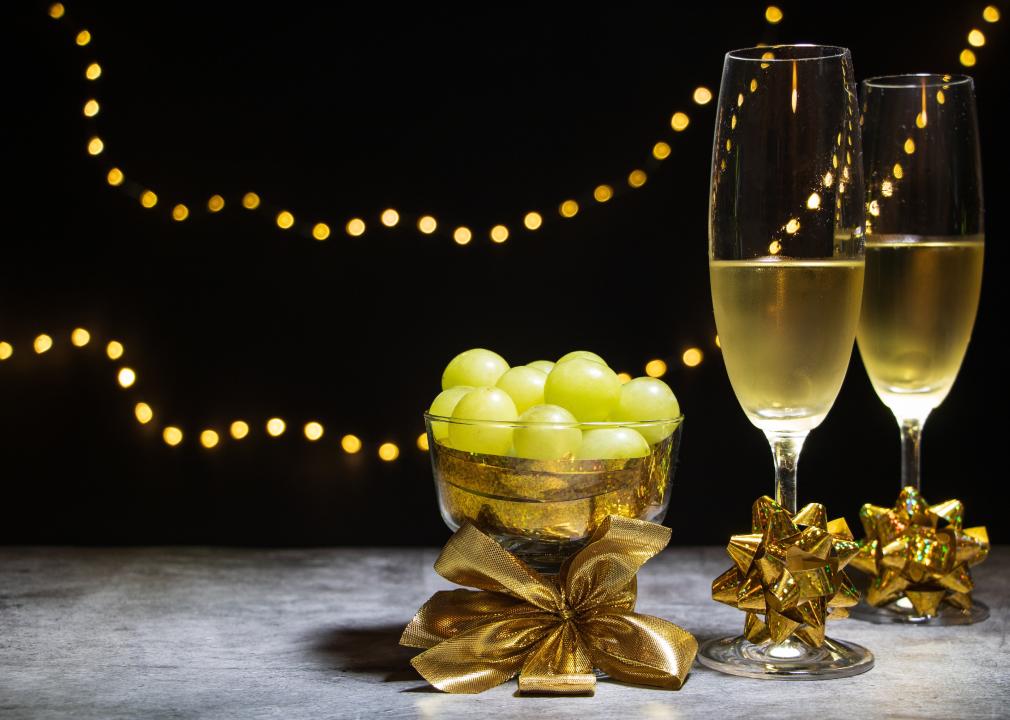
JosefePhotography // Shutterstock
Las doce uvas de la suerte
There isn't much of a recipe involved in this Spanish New Year's celebration—all you need is 12 green grapes and to remain awake long enough for the clock to strike midnight. The practice's heritage seems to have multiple origins.
One of the more commonly accepted theories is that winemakers in Alicante, Spain, needed to dispose of an overstock of wine grapes in the early 1900s; another suggests the practice is rooted in a mocking nod to the 19th-century bourgeoisie in Madrid, who followed the French tradition of eating grapes and drinking champagne on New Year's Eve.
Wherever it came from, the tradition of "las doce uvas de la suerte," or "the 12 grapes of luck," dictates that a grape is eaten at each clock stroke at midnight to attract abundance for the coming year.
Story editing by Carren Jao. Copy editing by Paris Close. Photo selection by Clarese Moller.
Check out the Florida Foodie podcast. You can find every episode in the media player below: